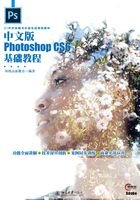
2.3 选区的调整
选区的调整包括扩大选区、扩展与收缩选区、边界与平滑选区、羽化选区、存储与载入选区等。
2.3.1 扩大选取
【扩大选取】命令会查找并选择那些与当前选区中的像素色调相近的像素,从而扩大选择区域,命令只扩大到与原选区相连接的区域。其操作步骤如下。
步骤01 创建如图2-29所示的选区。执行【选择】→【扩大选取】命令,如图2-30所示。

图2-29 创建选区

图2-30 执行命令
步骤02 单击【确定】按钮,选区被扩大,如图2-31所示。

图2-31 扩大选取
2.3.2 选取相似
【选取相似】命令同样会查找并选择那些与当前选区中的像素色调相近的像素。该命令可以查找整个文档,包括与原选区没有相邻的像素。其操作步骤如下。
步骤01 选择工具箱中的【魔棒工具】 ,在头发处单击创建选区,如图2-32所示。
,在头发处单击创建选区,如图2-32所示。

图2-32 创建选区
步骤02 执行【选择】→【选取相似】命令,相似色彩被选中,如图2-33所示。

图2-33 相似色彩被选中
2.3.3 扩展与收缩选区
【扩展】命令可以对选区进行扩展,其操作步骤如下。
步骤01 选择工具箱中的【套索工具】 ,创建选区,如图2-34所示。
,创建选区,如图2-34所示。

图2-34 创建选区
步骤02 执行【选择】→【修改】→【扩展】命令,在打开的【扩展选区】对话框中设置数值,如图2-35所示。

图2-35 【扩展选区】对话框
步骤03 单击【确定】按钮,选区被扩展,如图2-36所示。

图2-36 扩展选区
【收缩】命令可以使选区缩小,其操作步骤如下。
步骤01 选择工具箱中的【套索工具】 ,创建选区,如图2-37所示。
,创建选区,如图2-37所示。

图2-37 创建选区
步骤02 执行【选择】→【修改】→【收缩】命令,在打开的【收缩选区】对话框中设置数值,如图2-38所示。

图2-38 【收缩选区】对话框
步骤03 单击【确定】按钮,选区被收缩,如图2-39所示。

图2-39 收缩选区
2.3.4 边界与平滑选区
【边界】命令可以将选区的边界向内部和外部扩展,扩展后的边界与原来的边界形成新的选区。其操作步骤如下。
步骤01 选择工具箱中的【矩形选框工具】 ,创建选区,如图2-40所示。
,创建选区,如图2-40所示。

图2-40 创建选区
步骤02 执行【选择】→【修改】→【边界】命令,在打开的【边界选取】对话框中设置数值,如图2-41所示。步骤03 单击【确定】按钮,得到如图2-42所示的选区。

图2-41 【边界选取】对话框

图2-42 边界效果
在使用魔棒工具或【色彩范围】命令选择对象时,选区边缘往往较为生硬,而【平滑】命令可对选区的边缘进行平滑,使选区边缘变得更柔和。其操作步骤如下。
步骤01 选择工具箱中的【魔棒工具】 ,在花朵处单击创建选区,如图2-43所示。
,在花朵处单击创建选区,如图2-43所示。

图2-43 创建选区
步骤02 执行【选择】→【修改】→【平滑】命令,在打开的【平滑选区】对话框中设置数值,如图2-44所示。

图2-44 【平滑选区】对话框
步骤03 单击【确定】按钮,选区变平滑,如图2-45所示。

图2-45 选区变平滑
2.3.5 羽化选区
【羽化】命令用于对选区进行羽化。羽化是通过建立选区和选区周围像素之间的转换边界来模糊边缘的,这种模糊方式将丢失选区边缘的一些图像细节。下面对比一下对椭圆进行羽化前和羽化后的不同效果。
选择工具箱中的【椭圆选框工具】 ,创建选区,如图2-46所示。设置前景色为白色,填充前景色,如图2-47所示。
,创建选区,如图2-46所示。设置前景色为白色,填充前景色,如图2-47所示。

图2-46 创建选区

图2-47 填色
下面对椭圆羽化后填充,具体操作方法如下。
步骤01 选择工具箱中的【椭圆选框工具】 ,创建选区,如图2-48所示。
,创建选区,如图2-48所示。

图2-48 创建选区
步骤02 执行【选择】→【修改】→【羽化】命令,在打开的【羽化选区】对话框中设置数值,如图2-49所示。

图2-49 【羽化选区】对话框
步骤03 单击【确定】按钮,选区被羽化,填充前景色后的效果如图2-50所示。

图2-50 填色
2.3.6 选区的存储与载入
在图像处理过程中,有时需要重复使用选区来编辑图像。所以需要将创建的选区储存起来,当需要再次使用时,将存储的选区载入即可。
1. 存储选区
步骤01 创建好需要存储的选区,如图2-51所示。

图2-51 创建选区
步骤02 执行【选择】→【存储选区】命令,打开【存储选区】对话框,如图2-52所示。单击【确定】按钮即可存储选区,在【通道】面板中可以查看,如图2-53所示。

图2-52 【存储选区】对话框

图2-53 【通道】面板
2. 载入选区
当选区被存储后,就可使用【载入选区】命令将已存储的选区载入到指定的文件中。
打开【通道】面板,按住【Ctrl】键,单击要载入的选区所在的通道,如图2-54所示。此时选区被载入,如图2-55所示。

图2-54 【通道】面板

图2-55 载入选区
课堂范例——制作照片遮罩效果
步骤01 按【Ctrl+O】组合键,如图2-56所示。选择工具箱中的【椭圆选框工具】 ,绘制一个椭圆选区,如图2-57所示。
,绘制一个椭圆选区,如图2-57所示。

图2-56 打开素材

图2-57 绘制一个椭圆选区
步骤02 执行【选择】→【修改】→【羽化】命令,打开【羽化选区】对话框,设置参数如图2-58所示,然后单击【确定】按钮。按【Ctrl+Shift+I】组合键,反选选区,如图2-59所示。

图2-58 【羽化选区】对话框

图2-59 反选选区
步骤03 设置前景色为白色,按【Alt+Delete】组合键填充前景色。按【Ctrl+D】组合键,取消选区,最终效果如图2-60所示。

图2-60 最终效果